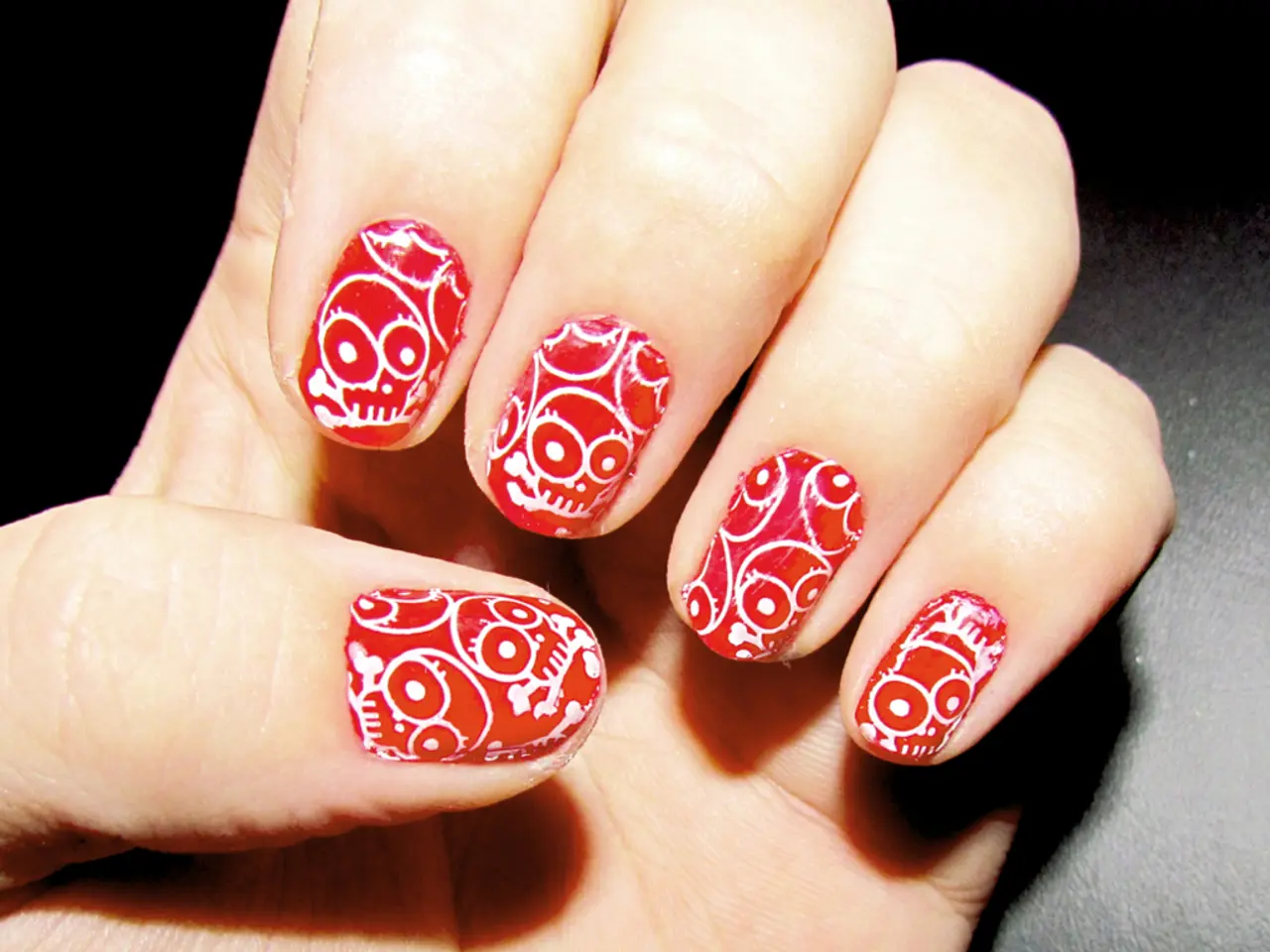Finger Burn Symptoms, Degree, Remedies, and When to Consult a Physician
Understanding and Treating Finger Burns: A Guide by Degree
Finger burns can be a common and painful occurrence, ranging from mild to severe. Here's a comprehensive guide on the common causes, symptoms, and home treatment options for finger burns, categorised by degree.
First-degree Burns
First-degree burns affect the top layer of skin and are typically caused by mild sunburn, brief contact with hot objects, steam, or other common household items. Symptoms include redness, pain, and mild swelling, with blisters being unlikely.
Home treatment options for first-degree burns include cooling the affected area with cool water for 10-15 minutes or a cool compress, removing any jewelry or clothing near the burn site, applying aloe vera or Aquaphor to soothe the burn, using over-the-counter pain relievers like ibuprofen or acetaminophen, and covering the burn loosely with a sterile, non-stick bandage if necessary. These burns usually heal within a week without intervention.
Second-degree Burns
Second-degree burns involve both the epidermis and part of the dermis, and are often caused by scalds from hot liquids, prolonged contact with hot objects, chemicals, or other sources. Symptoms include redness, pain, swelling, and blisters that may enlarge over hours.
Home treatment for second-degree burns includes immediate cooling with cool water for 10-15 minutes, removing any jewelry or clothing, applying topical antibiotics like bacitracin ointment or sterile medical-grade honey to prevent infection, using pain relief such as topical NSAIDs (e.g., diclofenac gel) and/or oral pain relievers, covering the burn with sterile non-stick dressing, avoiding popping blisters, and monitoring for infection. Minor second-degree burns can often be treated at home, but seek medical help if blisters are large, deep, or infected.
Third-degree Burns
Third-degree burns are the most severe, destroying all skin layers and sensory nerves. They are often caused by electricity, chemicals, fire, hot coals, grease, roofing tar, hot oil, and other extreme sources. Symptoms can vary but may include limited or no pain, blisters, skin appearing white, red, pale pink, or tan, and leathery skin.
Third-degree burns require immediate medical attention and common treatments may include early cleaning and debriding, antibiotic creams, oral or intravenous antibiotics, providing a humid, warm environment, cosmetic or functional reconstruction, medications for pain, skin grafting, a tetanus shot, and possibly inpatient care.
For all burns, immediate cooling with cool (not icy) water is crucial and helps limit tissue damage. Use sterile dressings and appropriate topical agents to prevent infection. Avoid using typical honey (due to the risk of contamination), and do not apply silvadene (silver sulfadiazine) if transferring to a burn center, as it may obscure wound assessment.
If there is any doubt about severity, size, depth, or if signs of infection develop, professional medical evaluation is strongly advised. It's also important to note that burns can present differently in people with different skin tones, so always consult a doctor for any burn that covers a large area of skin or appears leathery and dried out.
In conclusion, understanding the degree of a finger burn can help determine the appropriate home treatment or when to seek professional medical help. Always prioritise immediate cooling and seek medical attention if in doubt.
- While discussing the severity of finger burns, it's essential to be aware of other serious conditions like psoriasis, atopic dermatitis, or even Alzheimer's disease, as they might present unusual symptoms or require specific treatments.
- In the realm of health-and-wellness, maintaining good fitness-and-exercise routines can help strengthen the immune system and aid in recovering from minor burns or even preventing them.
- Skin-care regimens play a vital role in maintaining the health of our skin, especially after burn therapies and treatments.
- Ankylosing spondylitis, an inflammatory type of arthritis, often associated with depression and bipolar disorder, might require careful examination and understanding in patients experiencing burns.
- The predictive value of personal health records and genetic testing can help identify potential risks for diseases like breast cancer or non-small cell lung cancer (NSCLC) in individuals who have undergone severe burn injuries.
- Crohn's disease, an inflammatory bowel disease, may present issues for patients with burns, as it requires specific dietary adjustments and medications, including anti-inflammatory agents.
- When dealing with the psychological impact of burn injuries, it's crucial to consider the potential for depression and anxiety related to the disease, either due to visible scarring or the recovery process.
- Controlling chronic diseases like diabetes and hypertension can contribute to the overall well-being of patients during their recovery from burn injuries, as they may pose additional risks to healing and complications.
- Scientists are continuously researching novel therapies and treatments for burn victims to improve their recovery process, such as regenerative medicine and stem cell therapies.
- Apart from burns, it's crucial to be aware of the signs and symptoms of other health issues, such as cancer, as early detection can drastically improve the chances of successful treatment and recovery.




